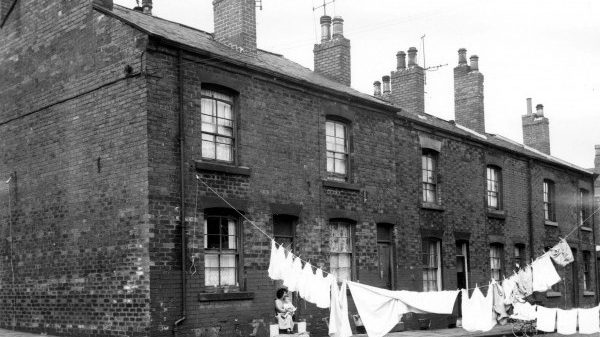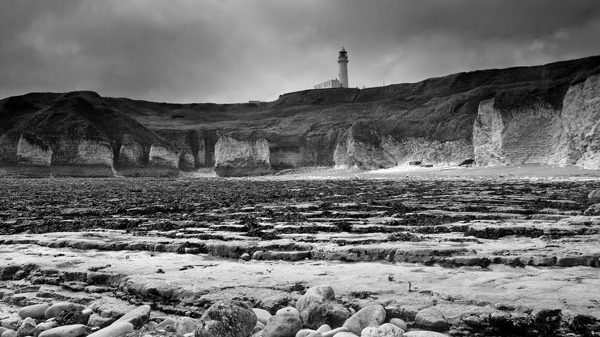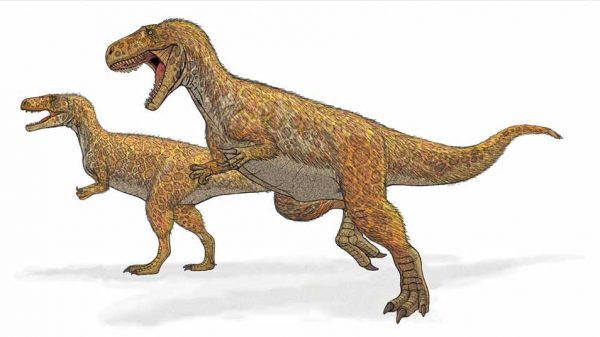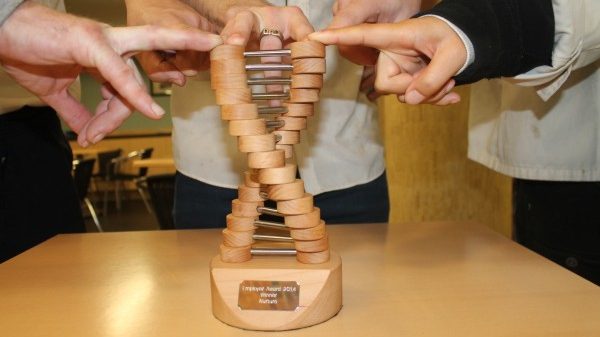−−− BY LINZI DAVIES −−−
100 years ago, this month, men staggered off a barren battlefield triumphant yet shattered – both physically and mentally. Exhausted beyond belief, suffering disease and injury. And they were the lucky ones. Under their feet, sucked down into the quagmire of the muddy ground and flooded trenches lay the bodies of their comrades – men who would not be returning home to loved ones. There were many, too many of these fallen soldiers. Was the victory worth the extortionate cost of lives? The heartbreak? The horror?
This was the Battle of Passchendaele which, along with the Battle of the Somme epitomises the terror and tragedy of the First World War. As the poppy collections begin by the Royal British Legion, we pause from our busy lives and the run up to Christmas to remember all those brave beyond belief. Last year we paid tribute 100 years on to those who fought in the Somme, and this year we do the same for those at Passchendaele.
THE STRATEGY
The Allies decided that they needed to control the ridges east and south of Ypres in West Flanders, Belgium. The area held a railway which was used by the Germans for vital supplies, and the strategy was to disrupt and close this supply system. Passchendaele, on the last ridge east, lay just 5 miles from a railway junction at Roulers. The possession of this higher ground would also mean that deployment and movement of artillery, reinforcements and supplies could be screened from view, whilst at the same time, the ridges gave excellent views of the surrounding meadows and fields. It was important too to destroy the German submarine base on the Belgian north-eastern coast, and a supporting attack by the British along the coast was supposed to achieve that objective.
This strategy was as controversial in 1917 as it is today with historians disputing the wisdom of the offensive for many reasons including the choice of area, army and leaders, and the refusal to wait for the arrival of the American Expeditionary Force. At the time, British Prime Minister David Lloyd George and General Ferdinand Foch, the French Chief of General Staff opposed the offensive and the War Cabinet did not give approval to Field Marshal Douglas Haig for the Flanders operation until the July after much deliberation. Haig had originally set the timetable for the attacks to begin in Flanders in June, spurred on by the successful capture of the Messine Ridge where the British had exploded 19 underground mines to defeat the enemy. It was thought that an offensive at Ypres would continue to grind down the German forces and Haig also wanted to take advantage of the fact that the German army was split at that time, fighting Russia on the Baltic coast.
THE BATTLE
The campaign which we today remember as the Battle of Passchendaele was officially named the Third Battle of Ypres, and had been raging since July with hard fought advances and retreats over the surrounding ridges and villages.
One man who lost his life just as these assaults began was the only man to have been awarded a Victoria Cross and Bar of the First World War. His name was Noel Chavasse. Born in Oxford in 1884 the son of a Bishop, he graduated from Oxford University with a first-class degree and also represented Great Britain in the 1908 Olympics, running the 400m. He joined the Royal Army Medical Corps in 1913 and was posted to France with 1/10th Battalion King’s Regiment, the Liverpool Scottish. In August 1916 he was awarded his first Victoria Cross for saving around 20 men whilst wounded on the Somme.
Almost a year later, he was hit in the head and left with a fractured skull in the first attack of Passchendaele, but refused to leave and continued to venture into no man’s land again and again to treat the wounded. On the 2nd August 1917 his first-aid post was hit by a shell but despite a serious stomach wound and with his face unrecognisable he crawled half a mile for help.
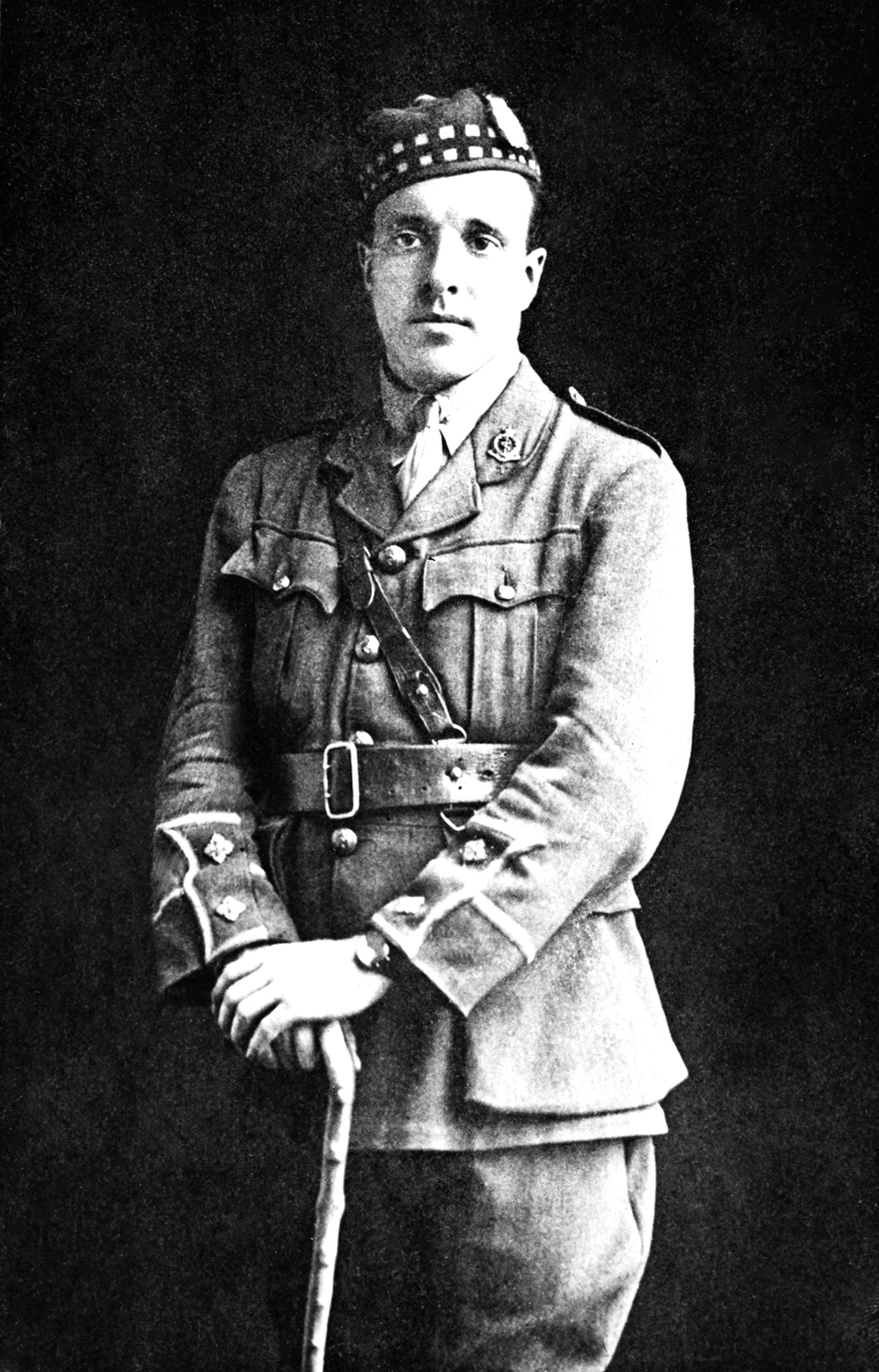
■ Image © IWM (Q 67309)
Captain Noel Godfrey Chavasse VC and Bar, MC of the Royal Army Medical Corps. He was one of only three people to be awarded the Victoria Cross twice, once for his action on the Somme, and the second, posthumously for his action at Passchendaele
On the 4th August he managed to dictate a letter to a nurse for his sweetheart Gladys which read “Duty called and called me to obey” before he died aged 32. Before Passchendaele he had refused an offer of a surgeon’s position at the base hospital, preferring instead to remain on the front line.
The campaign had never been intended to last so long, but the worst rains in Ypres for more than 30 years hit just days into the assaults causing havoc and difficulties beyond imagining.
Brigadier-General John Charteris, who was the BEF Chief of Intelligence up to 1918, wrote in his 1929 book Field Marshal Earl Haig “Careful investigation of records of more than eighty years showed that in Flanders the weather broke early each August with the regularity of the Indian monsoon: once the Autumn rains set in the difficulties would be greatly enhanced…. Unfortunately, there now set in the wettest August for 30 years.”
This rain settled on the low-lying land of thick clay soil day after day. Combined with smashed drainage systems due to constant shelling in the area during the war, the results were catastrophic. The landscape turned into a quagmire which immobilised tanks, clogged rifles and drowned many men and horses as the shell holes quickly turned to swamps. Both the British and German forces were stuck in a stalemate for 1 ½ months of gaining then losing yards of stinking, muddy, desolate ground. Precious lives were lost in the fighting, and in the horrific conditions.
The Australian and New Zealand forces joined the British in the September and over the next several weeks the Allies began to gain the upper hand following successful battles at Menin Road Ridge, Polygon Wood and Broodseinde. This established possession of the eastern ridge of Ypres for the Allied forces. Haig called on the Canadian Forces for assistance in October after a period of little progress.
The first battle for Passchendaele began on the 12th October when heavy rain and mud again made it very difficult for artillery to move close to the front. Morale among the Allies was very low, they were exhausted from trying to manoeuvre through the sucking mud, wet and filthy, cold down to their bones. They managed to advance a short distance, but most of the ground was recovered by the Germans in their counter attacks. In just that first day there were 13,000 Allied casualties which would prove to be one of the worst days in New Zealand military history. The following day, it was agreed that the attacks would halt until the weather improved and roads allowing the movement of artillery could be extended.
At the end of October, the Canadians led two more attacks and slowly gained ground, readying themselves for a final assault on Passchendaele planned for the 6th November.
W.E. Curtis of the 10th Battalion said “We moved out overnight right through the city of Ypres up into a place which I believe was St. Julien. However, there was nothing there but shell holes. We lay there overnight. I was buried there that night, up to my neck in mud and sand and chalk…. I was fortunate coming out of there, as a matter of fact, because a shell from the enemy came over and dropped into the crater behind us or which would be forward of us and, in dropping in, it did not explode but it did disturb the earth between the two craters and we got all the water that was in the other. The whole thing caved in and there were two or three of us buried to our neck. We had one whale of a time getting out of that but we got out.”
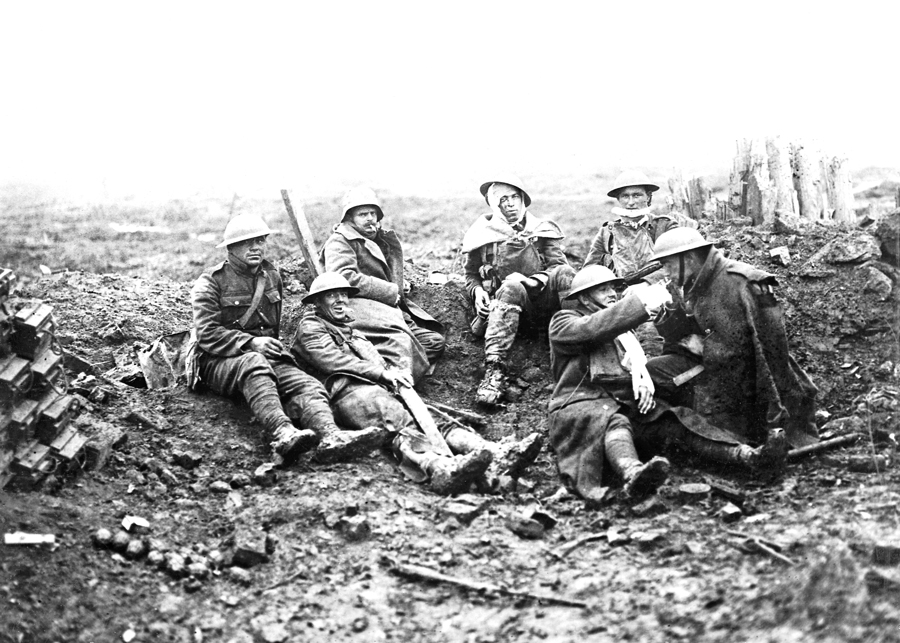
■ Image © IWM (CO 2212)
A group of lightly wounded Canadians resting for a smoke near Heine pillbox during the assault on Passchendaele
Thankfully, the rain ceased for three full days and in just a matter of hours on the morning of the 6th, Passchendaele was captured by the 1st and 2nd Canadian Divisions. A final action on the 10th November secured the remaining high ground near Hill 52.
WAS IT WORTH IT?
Haig was constantly under pressure throughout the campaign to stop the attack. At the capture of Passchendaele following 105 days of fighting, the Allies had advanced just 5 miles. Was 5 miles of what looked like a post-apocalyptic mud encrusted waste land worth the loss of approximately 275,000 lives under British command? The Germans lost 220,000 men, and in total 90,000 bodies were never identified, and 42,000 never recovered. Absolutely horrific numbers.
Prime Minister David Lloyd George certainly didn’t think so – he had only agreed to the plan in the first place because there were no other ideas on how to advance at the time. He wrote in his War Memoirs published in 1938 “Passchendaele was indeed one of the greatest disasters of the war…No soldier of any intelligence now defends this senseless campaign.”
Harry Patch was the last veteran of the battle, passing away in 2009. Harry was conscripted and by 1917 was in a machine gun team at Passchendaele. He certainly did not feel it was worth it, saying in interviews “I had no inclination to fight anybody…why should I go kill somebody I never knew and for what reason?
“Shells were whizzing over us towards the German lines just 750 yards away, and their machine-gun bullets were coming in the opposite direction. But what I remember most was the waiting, the anxiety, the fear. I have a memory of crossing the stream. It was flooded, with the trees on either side smashed to pieces. We crossed on pontoons because the bridge had been blown up. On the far side of the stream we stopped to await the order to advance. The bombardment to cover us took your breath away. The noise was ferocious. There was apprehension in everyone’s eyes and horror in a few.
“It was absolutely sickening to see your own dead and wounded, some calling for stretcher bearers, others semi-conscious and beyond all help, and the German wounded lying about too, and you couldn’t stop to help them.”
Harry was wounded in the chest and three of his friends killed when a shell hit them. By the time he recovered the war was over. He said “The peace was settled round a table. So why the hell couldn’t they do that at the start without losing millions of men?”
Regardless of the feelings of many, including the Prime Minister, the hundreds of thousands of lives were already lost.
LAST POST – POEM WRITTEN BY CAROL ANN DUFFY (POET LAUREATE) DEDICATED TO HARRY PATCH & HENRY ALLINGHAM
In all my dreams, before my helpless sight,
He plunges at me, guttering, choking, drowning.
If poetry could tell it backwards, true, begin that moment shrapnel scythed you to the stinking mud….
But you get up, amazed, watch bled bad blood run upwards from the slime into its wounds;
See lines and lines of British boys rewind back to their trenches, kiss the photographs from home
mothers, sweethearts, sisters, younger brothers not entering the story now to die and die and die.
Dulche-No-Decorum-No-Pro patria mori.
You walk away.
You walk away;
Drop your gun (fixed bayonet) like all your mates do too- Harry, Tommy, Wilfred, Edward, Bert-
And light a cigarette.
There’s coffee in the square, warm French bread and all those thousands dead
are shaking dried mud from their hair and
queuing up for home.
Freshly alive, a lad plays Tipperary to the crowd,
Released from History, the glistening, healthy
horses fit for heroes, kings.
You lean against a wall, your several million
lives still possible
And crammed with love, work, children, talent,
English beer, good food.
You see the poet tuck away his pocket-book and smile.
If poetry could truly tell it backwards,
Then it would.
The story of Passchendaele. No fairy tale, no bedtime story but a horror story beyond anything imaginable in an author’s mind. The families of the brave waiting desperately at home for news, the poor men who returned home broken, the poor men who died for their country. All sacrificed so much so that we can be free today, to choose, to enjoy, to live.
IN NOVEMBER WE REMEMBER
To learn more about the First World War, other global conflicts and explore how war affects people’s lives visit Imperial War Museum North in Trafford. The museum is open daily from 10am – 4.30pm and entry to the Main Exhibition Space is free.
Visit iwm.org.uk.
IWM North, The Quays, Trafford Wharf Road,
Manchester M17 1TZ
